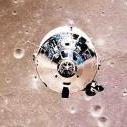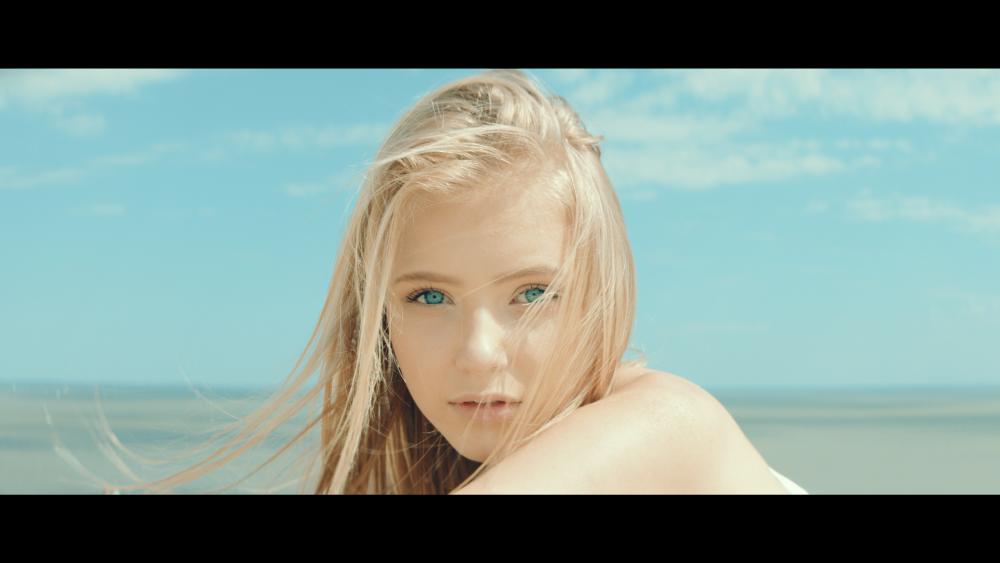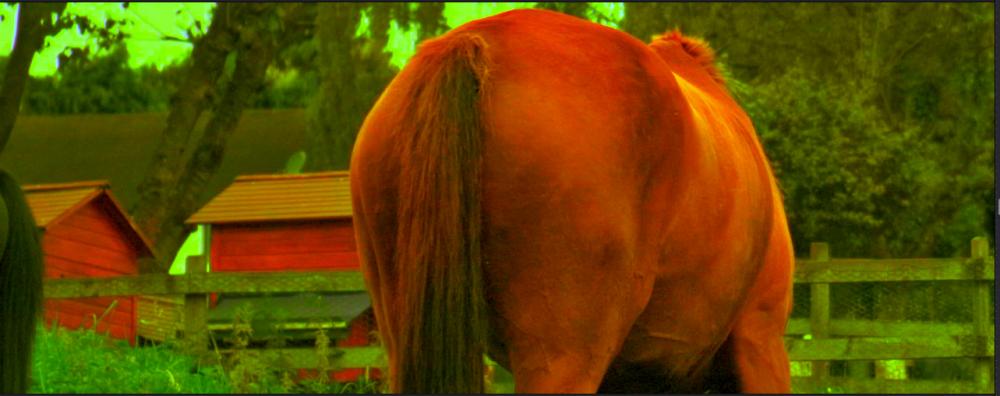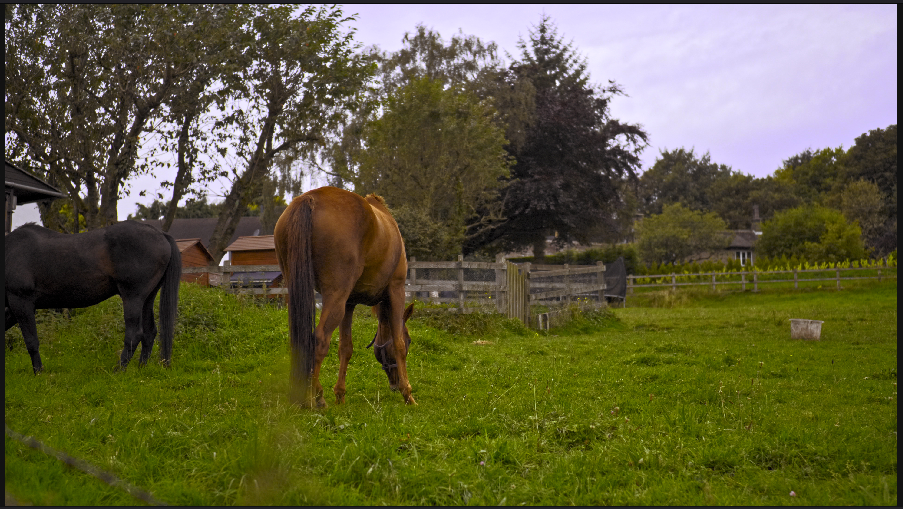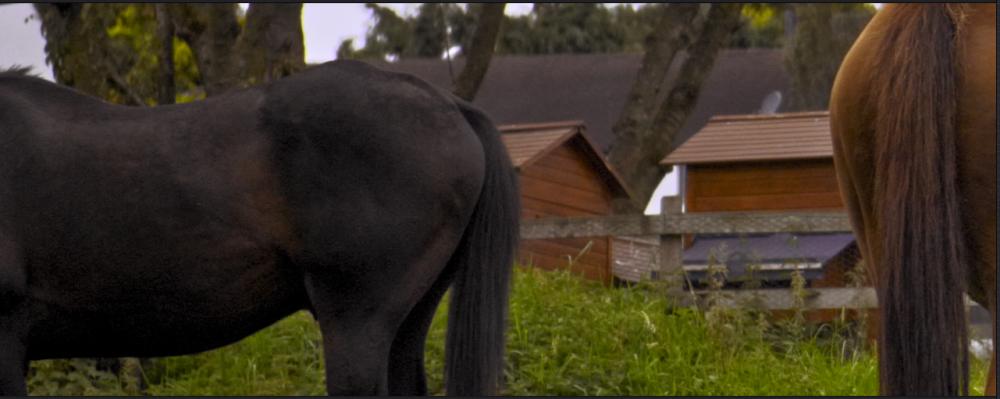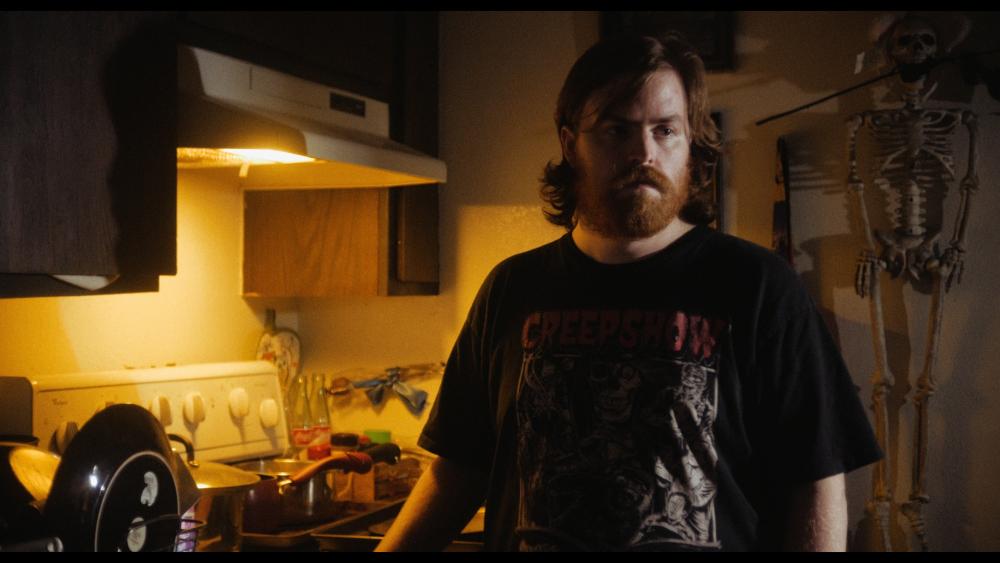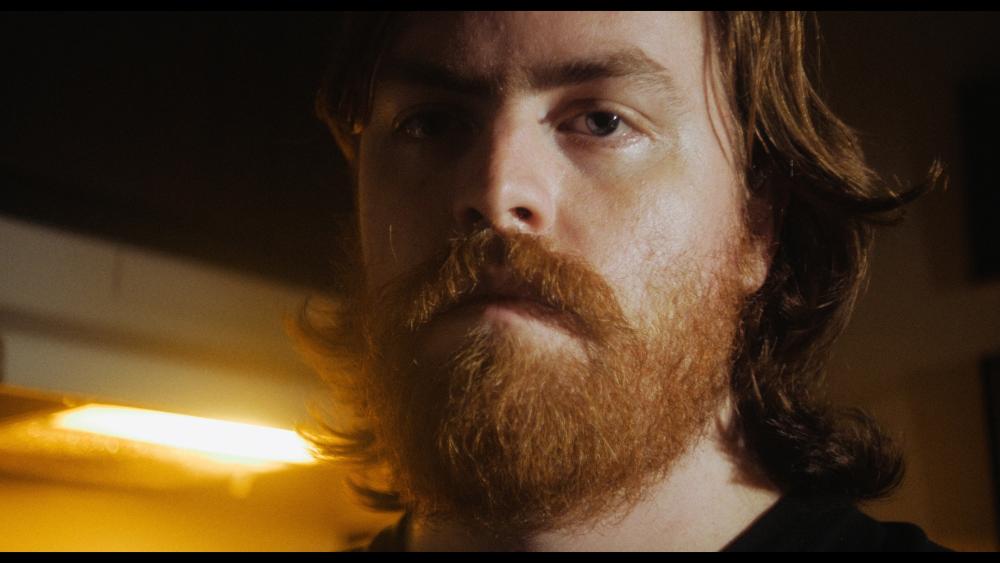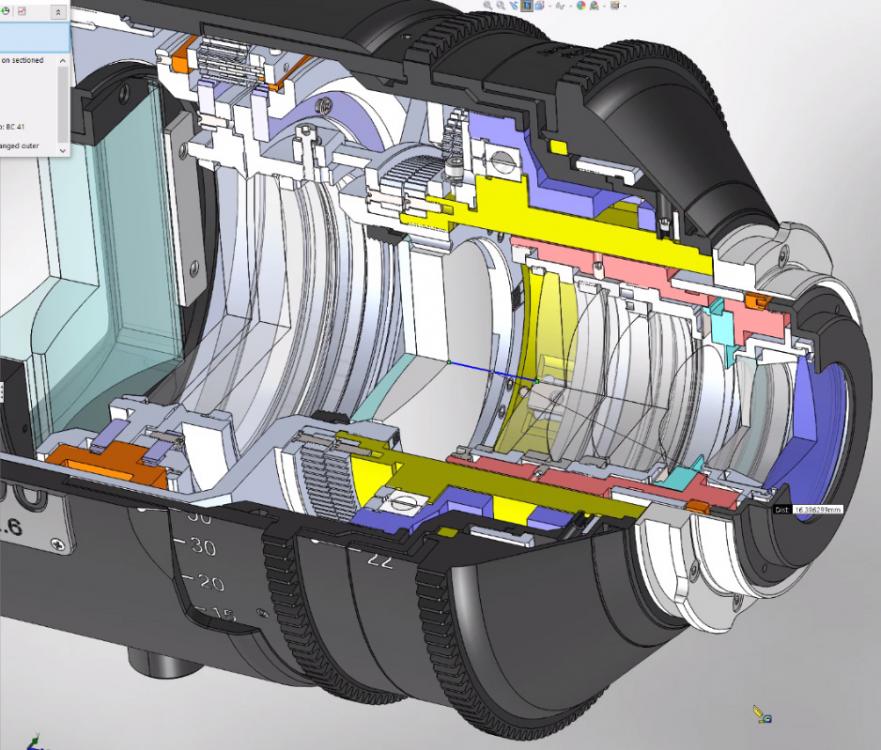Leaderboard
Popular Content
Showing content with the highest reputation on 09/04/2017 in all areas
-

Panasonic GH5 Review and exclusive first look at Version 2.0 firmware
Jimbo and 3 others reacted to AaronChicago for a topic
If you zoom in 500% you’ll see its not a real horse, but tiny dots.4 points -
Remember that you don't have to shoot in V-Log, or Cine-D, or whatever and then laboriously grade it to perfection. There are plenty of other profiles and controls to use to get a good SOOC look. The catch there will be that you're usually sacrificing a bit of DR with those profiles (and DR is one of the a6500's strengths), but people seem to be getting good DR with the Like709 profile. Or use the Leeming LUT workflow, which couldn't really be simpler (set camera to recommended settings, shoot, drop LUT on the files in your NLE). He has LUTs for V-Log so this might be a simple way to get the max DR of the camera with no added effort in post. If you typically have to do a lot of WB corrections I would definitely want to have 10bit just for that. The only wins I see for the Sony would be a small edge in DR, lowlight performance, and photo quality. But if the GH5 is good enough for you in those categories, I think all of its other benefits make it the clear choice really.3 points
-

How to Take Advantage of Our Entirely Saturated Market and Make Money
EthanAlexander and 2 others reacted to jcs for a topic
Practice shooting stills in black and white to learn light and shadow. Also indoors against black backdrops where all the light is controlled- ideally with point light sources so you can do every kind of light (bounce/diffuse to get bigger sources), plus flags etc. Start with just one light. I read a lot and prefer doing my own experiments to really learn things, vs memorizing and not really understanding how things work. I learned a lot from this guy when doing still photography: https://peterhurley.com/ Sometimes we learn after the shot. Couple seconds lined up shot on iPhone, noticed amazing lighting on face later (positioned her quickly, just one photo. Quick edit in Snapseed; all on phone): You can practice with your phone anywhere anytime. Positioning the subject(s) and camera in natural/practical light is also part of the craft.3 points -
Rolling Shutter Guide
Gregormannschaft and one other reacted to Ed_David for a topic
I have always found this thread to be really important in deciding on using certain cameras inside vehicles, with fast motion: http://www.dvxuser.com/V6/showthread.php?303559-Measuring-rolling-shutter-put-a-number-on-this-issue! Thanks to Samuel Going to post text as well, in case dvx100's forum goes under: RX100 V 250 fps ---- 3.8 ms (3.8-3.8) BM 4.6K (2K crop)--- 6.3 ms (official) 1DX II 1080p 60&120- 6.7 ms (6.6-6.7) NX1 1080p ---------- 7.9 ms (7.7-8.0-8.1-7.8) NX500 2.5k --------- 8.6 ms (8.2-8.8-8.9) a99 II 1080p ------- 8.7 ms (8.8-8.7) BM MicroStudio 4K--- 9.9 ms (official) a7r II 1080p S35--- 10.5 ms (11.0-10.0) a7r II 1080p FF---- 10.8 ms (11.0-10.5) 1DX II 1080p 24 --- 11.1 ms (11.1-11.2) a6000 1080p24&30--- 12.2 ms (13.9-11.1-11.5) BM 4.6K (4K crop)-- 12.6 ms (official) BMMCC ------------- 13.3 ms (official) my measurement was 13.4 ms (13.7-13.5-12.9) GH4 1080p --------- 13.7 ms (13.7-13.5-13.1-14.0-13.9-13.5-13.5-13.9) RX100 V 1080p ----- 13.9 ms (14.4-14.0---14.2-13.1) (first 2 with stabilization, last 2 without) D750 -------------- 14.5 ms (14.6-14.1-14.6-14.8) 1DX II 4k 24&60 --- 14.7 ms (14.6-14.9-14.9-14.6) RX10 -------------- 14.8 ms (14.5-14.8-15.0) GH5 --------------- 15.0 ms (official, preproduction) BM 4.6K ----------- 15.2 ms (official) my measurement was 16.3 ms (16.3-15.9-16.8) a6300 1080p24 ----- 15.2 ms (15.8-14.6) GX85 1080p -------- 15.4 ms (13.8-16.7-15.7) GH3 --------------- 15.5 ms (15.4-15.7-15.4) G7 1080p ---------- 16.9 ms (17.5-16.3) XT2 1080p --------- 16.9 ms (16.9-16.0-17.4-17.3) RX100 IV 1080p ---- 16.9 ms (16.5-17.3) (without stabilization it's slightly faster: 16.1) RX100 V 4k -------- 17.5 ms (18.1-16.3-17.7---17.7-16.9-18.5) (first 3 with stabilization, last 3 without) BMPCC ------------- 17.7 ms (official) my measurement was 17.8 ms (17.7-17.7-20.0-20.0) a7s APS-C 1080p --- 19.5 ms (20.3-18.4-19.5-19.5) a7R II 4K FF ------ 19.9 ms (19.3-19.6-19.4-21.2) 5D3 --------------- 20.5 ms (20.7-20.5-20.4) D5200 ------------- 22.4 ms (22.5-22.1-22.6) GH4 4K/UHD -------- 22.0 ms (official) my measurement was 22.5 ms(23.2-22.3-22.7-22.7-22.4-21.8-22.4-22.8-22.6) a99 II 4k --------- 23.4 ms (23.3-23.5) BMC --------------- 23.6 ms (official) my measurement was 25.0 ms (26.7-24.8-23.5) 5D2 --------------- 25.9 ms (25.5-26.4-25.8) 5Dsr -------------- 27.7 ms (27.5-27.9-27.6) G7 4k ------------- 28.1 ms (27.8-28.5) GX85 4k ----------- 28.9 ms (30.2-29.0-28.8-27.5) NEX-5N ------------ 29.4 ms (28.8-29.6-28.9-29.8-29.8-29.1-29.7) a7s II FF 1080p --- 30.3 ms (29.5-31.2) a7s II FF 4K ------ 30.4 ms (30.2-30.6) a7s FF 1080p ------ 30.5 ms (30.1-32.0-30.5-30.3-29.2-30.9) XT2 4k ------------ 30.7 ms (30.5-30.7-31.2-31.2-30.8-29.9) NX1 4K ------------ 30.9 ms (30.6-31.6-31.4-30.7-30.2) NX1 UHD ----------- 32.6 ms (32.9-32.0-32.9-32.5) a7R II 4K S35 ----- 33.3 ms (35.6-32.2-32.8-35.3-32.6-31.1) RX100 IV 4K ------- 36.6 ms (36.4-36.7) (without stabilization it's slightly faster: 35.7) a6300 4K 24fps ---- 39.0 ms (39.2-38.9) OTHER NUMBERS, MOST OF THEM FOUND BY SQUIG SOMEWHERE ON THE WEB: Film --------------- 5 ms? (here) Scarlet ----------- 14 ms F65 --------------- 14 ms AF100 ------------- 14.85 ms FS100 ------------- 15 ms FS7 --------------- 15 ms (here) C300 -------------- 16 ms Red One MX -------- 16.6 ms 7D ---------------- 21 ms 5D MKII ----------- 25 ms GH1 --------------- 25 ms D90 --------------- 33 ms I am curious to see how the sony a9, a99, and canon 1dx ii stack up against each other in rolling shutter. I get asked a lot to do crash cameras in cars - and in the past, I have used the a7s ii in 1080p mode. But these guys now seem like a better option to prevent jello.2 points -
Panasonic GH5 Review and exclusive first look at Version 2.0 firmware
Cinegain and one other reacted to Brian Caldwell for a topic
The base design is for Arri Alexa open gate, with a PL mount. I've intentionally made the BFL very long so that all lenses will be compatible with PL-EF adapters ( https://c7adapters.com/en/product/pl_lens_-_ef_mount/35 ). Due to the positive lock feature these adapters are completely rock steady and don't introduce any play that would be noticeable during focus pulls. So you basically have a choice of PL or EF by use of the adapter. With EF you can use COTS Speed Boosters to go down to M43 at very high speed. Alternatively, I may offer "native" M43 mount if the demand warrants it. Similarly I'll be able to produce "FF" and 65/70mm versions using the same base optics plus different rear optical groups. Either way, focus will be one-ring.2 points -

Rolling Shutter Guide
iamoui and one other reacted to EthanAlexander for a topic
Here they are in alphabetical order 4K(+) Bolded. I also Added a few from C5D numbers, and cleaned up the list. RX100 V 250 fps ---- 3.8 ms 1DC S35HD --------- 18ms 1DC 4K ------------- 25ms 1DX II 1080p 24 --- 11.1 ms 1DX II 1080p 60&120- 6.7 ms 1DX II 4k 24&60 --- 14.7 ms 5D MKII ----------- 25 ms 5D2 --------------- 25.9 ms 5D3 --------------- 20.5 ms (18ms C5D) 5Dsr -------------- 27.7 ms 7D ---------------- 21 ms a6000 1080p24&30--- 12.2 ms a6300 1080p24 ----- 15.2 ms a6300 4K 24fps ---- 39.0 ms a7r II 1080p FF---- 10.8 ms a7r II 1080p S35--- 10.5 ms a7R II 4K FF ------ 19.9 ms a7R II 4K S35 ----- 33.3 ms a7s APS-C 1080p --- 19.5 ms a7s FF 1080p ------ 30.5 ms (29ms C5D) a7s II FF 1080p --- 30.3 ms a7s II FF 4K ------ 30.4 ms a99 II 1080p ------- 8.7 ms a99 II 4k --------- 23.4 ms AF100 ------------- 14.85 ms Alexa 2K ------------ 6ms Amira S35 2K ------- 2ms BM 4.6K ----------- 15.2 ms (official) my measurement was 16.3 ms BM 4.6K (2K crop)--- 6.3 ms (official) BM 4.6K (4K crop)-- 12.6 ms (official) BM MicroStudio 4K--- 9.9 ms (official) BMC --------------- 23.6 ms (official) my measurement was 25.0 ms BMMCC ------------- 13.3 ms (official) my measurement was 13.4 ms BMPCC ------------- 17.7 ms (official) my measurement was 17.8 ms C300 -------------- 16 ms C300 II 4K --------- 6ms D5200 ------------- 22.4 ms D750 -------------- 14.5 ms D90 --------------- 33 ms F65 --------------- 14 ms Film --------------- 5 ms? FS100 ------------- 15 ms FS7 4K ----------- 15 ms (here) (14ms C5D) G7 1080p ---------- 16.9 ms G7 4k ------------- 28.1 ms GH1 --------------- 25 ms GH3 --------------- 15.5 ms GH4 1080p --------- 13.7 ms GH4 4K/UHD -------- 22.0 ms (official) my measurement was 22.5 ms (C5D: 14ms) GH5 --------------- 15.0 ms (official, preproduction) GX85 1080p -------- 15.4 ms GX85 4k ----------- 28.9 ms NEX-5N ------------ 29.4 ms NX1 1080p ---------- 7.9 ms NX1 4K ------------ 30.9 ms NX1 UHD ----------- 32.6 ms NX500 2.5k --------- 8.6 ms Red One MX -------- 16.6 ms RX10 -------------- 14.8 ms RX100 IV 1080p ---- 16.9 ms (without stabilization it's slightly faster: 16.1) RX100 IV 4K ------- 36.6 ms (without stabilization it's slightly faster: 35.7) RX100 V 1080p ----- 13.9 ms(first 2 with stabilization, last 2 without) RX100 V 4k -------- 17.5 ms (first 3 with stabilization, last 3 without) Scarlet ----------- 14 ms XT2 1080p --------- 16.9 ms XT2 4k ------------ 30.7 ms2 points -
A really great resource for learning lighting is cinesummit. Working DPs show music videos, commercials, etc, and break down the lighting. http://cinesummit.com/ Is good to see how to light cars, beauty commercials, as well as natural lighting, and what they do. Also there is Shane Hurlbut's videos that walk you extensively through lighting scenes. This is also a good resource. Cinematography.com is an excellent resource as well - a lot of top DPs will answer questions about lighting scenes. As well as the cinematography mailing list. And of course all the great books written about lighting and cinematographers. "Young Cinematographers" is incredibly inspiring, with amazing DPs like Darius Khondji, Lance Accord, and Harry Savides walking though lighting setups and their lives. American Cinematographer can also be useful, albeit it's more about gear and tech. And Roger Deakins answers a ton of great questions and walks through his setups. That man has zero ego - he's an amazing figure in the cinema world. Matt Workman is super great (old friend of mine) when he looks at a film and literally breaks down the lighting in the scenes.2 points
-
To be brutally honest....Most camera reviewers and early adopters do a PISS poor job of filming good subject matter and showing off the strengths of the camera being evaluated. They WASTE so much time blabbing about tech specs and and showing themselves on screen TALKING about features of the camera VS shooting something and SHOWING the features. No one wants to watch 3 minutes of a talking head and 1 minute of sample clips. Take for instance the C100...folks swear its merely a documentary camera. Below are some test shots I took for a web series I'm working on with the C100MK2. Clog with light grade upscaled to 4k. I'm betting the C200 looks even better.2 points
-

GH5 vs Ursa Mini 4.6K
Ed_David reacted to AaronChicago for a topic
I was planning on doing a more in depth test, but I only had a few minutes to spare during a shoot to compare the two cameras with our actress. GH5 Settings: UHD, V Log L 10 bit, ISO 800, 24p, Sigma 18-35, shot at 28mm f4 using Nikon Speedbooster. Ursa Mini 4.6K Settings: UHD, ProRes 422, ISO 800, 24p, Sigma 18-35, shot at 28mm f4. Grade: I started with Comet Color A Side for the UM46K. Added a bit of contrast and saturation. From that point I tried matching the GH5's color/exposure to match. Lighting was mixed conditions. Her face was lit with a Quasar Science 5600K LED tube + natural daylight coming in the window. Background lights were running at around 2600K. Walls are a greenish yellow color naturally. password: test1 point -
For me the biggest surprise was that ETC works in 4k. I love this! And also, VFR works in 4k up to 60 fps which feels very streamlined.1 point
-
Rolling Shutter Guide
condra reacted to no_connection for a topic
Focal length or pan speed does not really matter as long as you can see and measure the effect. In short you have a vertical line like a lamp post, when you pan it at a constant speed you take the distance between two frames, then you check how much the bottom part of the line lags behind. Then you calculate the % of the distance that it lagged compared to distance moved. Then you take the frame time, roughly 42ms for 24fps. And you apply your % to that. X-T2 would be about 72% lag if RS is 30ms. Which when you think about it it is quite a lot, the bottom part of the image is lagging a significant portion of the frame behind. The a6300 pretty much lags an entire frame behind between top and bottom, which is why 30fps had to be cropped (only 33ms to work with)1 point -

New Zhiyun Crane 2 for preorder on BH
ntblowz reacted to Don Kotlos for a topic
"It's a focus wheel" "The sensitivity can be adjusted" "and then this one (the wheel on the bottom) for ISO" "Can it be set to adjust other parameters?" "Yes" "Currently only for Canon?" "Yes" https://www.youtube.com/watch?v=ewZJ_GW1tn81 point -

Panasonic GH5 Review and exclusive first look at Version 2.0 firmware
srgkonev reacted to MoonCannon for a topic
I think the v-log footage you shared grades quite nicely...1 point -
Petition for Samsung NX1 hack
Werner H. Graf reacted to Kisaha for a topic
NX1's AF was the second best back then, not that further away from Canon's, and still I prefer it from Sony's for video (so in my opinion, it is still the second best!). Samsung was nothing to Canon back then, the smaller players were afraid the most (Olympus, Fuji, Panasonic mainly; Sony was worried, and Nikon would have been doomed). Olympus and Fuji haven't the resources to fight Samsung, Nikon can't compete in the new digital age, and even Panasonic is much smaller than Samsung. Sony is powerful, but Samsung had some amazing R&D breakthroughs, and the capacity to manufacture EVERYTHING you need for a photo/video camera (CPUs, RAMs, lenses, Super AMOLED touch screens, everything). First 28mpxls BSI sensor (A7Rii was the second big sensored BSI actually) etc etc. Samsung just decided that they didn't want to compete on a declining market, and pro video/photography was a long shot. NX1 was too late in the game. It is just a pity that we didn't see a NX1mkII, they did the first version SOOOOO good, without any prior real practical experience. The NX team had some truly talented and passionate people (just check some of their older corporate videos), something that a huge capitalistic and autocratic mega-trust, couldn't allow to exist.1 point -

BMD Pocket Cinema Camera still worth it in 2017?
Santiago de la Rosa reacted to 7 Lakes for a topic
1 point -

LOL Canon... C200 Codec "Upgrade" details announced
Juank reacted to EthanAlexander for a topic
I don't have a problem with the codec itself, the problem I have is that Canon led (potential) buyers on. They teased a middle ground codec that isn't actually any better (just more metadata) and I find that unethical.1 point -

Lumix GH5: The Single Most Underrated Feature
Juank reacted to AaronChicago for a topic
To reduce sharpness without reducing resolution I'd highly recommend the Tiffen Digital Diffusion FX 2 filter. It doesn't cause highlights to bloom like the Pro Mist but softens the overall look. I keep them on my 2 Sigma Cine Lenses always.1 point -

Rolling Shutter Guide
Ed_David reacted to Don Kotlos for a topic
A9 FF 4K should be about ~25ms : http://www.imaging-resource.com/news/2017/08/22/a-new-test-debuts-at-ir-the-sony-a9-rolling-shutter-is-pretty-minimal There are reports that the S35 has faster readout with not much hit on the quality. Such a shame not to implement the ~7ms of stills during video mode. I am interesting to see what they did with RX0 that has the same fast readout technology, and is targeted for "action" ... The other camera that would be interesting to check is the E-M1 mkII. It will probably be better than all other 4K cameras here. Not the most cinematic look, but coupled with the excellent IBIS it will be very useful for handheld stuff.1 point -
I'm a more than happy Ursa Mini Pro owner :)))) Everything is just excellent with Blackmagic cameras. Just finished a new music video with it.1 point
-
Panasonic GH5 Review and exclusive first look at Version 2.0 firmware
Cinegain reacted to Brian Caldwell for a topic
You're exactly right. Shooting with 2x lenses on 4:3 will give 2.66:1, which also requires cropping to get to the DCI standard 2.39:1 for normal theater projection. Which is why I'm interested in 1.79x lenses to yield 2.39:1 directly from 4:3 without any need for cropping.1 point -
My goal was "Hollywood" in my 20s (did work there a bit) but ended up in financial software/data for the past 30+ years. My guess is DP work is similar. My experience. 1. Film/Photography/Video, has always been a near impossible field to make a living in. My observation 30+ years. Unless you specialize in a very complex area where a shortage of talent develops. In photography and film, bad news, those areas DO NOT EXIST There is always an excess supply of talent. 2. One's availability today is worth more to a prospective client than someone else's genius available tomorrow. Don't kid yourself. Whatever the client says, you're replaceable and a minor part of their world. You can be a raving egomaniac in your domain, but get in the way of someone signing your check and no amount of genius will save you. Make yourself available. 3. A client only needs 10% of your skill. When you try to give them more, it confuses them and can work against you when they want to hire again. Understanding and matching a client's priorities, which will ALWAYS be slightly different than your expertise, is paramount. Anticipating the client's needs, which may be some form of "cleaning the windows" is 90% of completing a success project. Keep your head out of your head out of your ass. Does all this mean you shouldn't become the most skillful DP possible? No, but you learn for YOU, for your pride in your work. Do not connect skill with ability to get work. It will have very little to do with what work you get. I know that sounds unbelievable. I don't quite believe it myself. Yet if I objectively look at all the work done out there, it seems random, the scale of stuff, from bad to great. In other words, the quality should be better IF THERE was a meritocracy. There is simply too much poorly done stuff, in my eyes, in all areas of tech, to indicate that quality is the prime factor to employment. Good quality stuff is there by luck. Human endeavors are complex, emotionally laden efforts to give meaning to our lives. What gives you meaning, say great lighting, doesn't give the actor meaning, or the producer, etc. Be compassionate to others. Bottom line, if you're thrilled to have the opportunity to even get coffee on the set you'll find a place. If you're thinking about "saturated markets" and "making money" clients will pick up on that and get someone they think will work for free, because yeah, we all just suck! It's just a job. Money is always an issue. 9 out 10 pats on the back you must give yourself.1 point
-
Jon, great video, and that is a great feature. Knowing what you've shot has never been so easy.1 point
-

A7RII as a B Camera with A7SII
webrunner5 reacted to Trek of Joy for a topic
To the OP, I would sell the a6300 get the R2 over another S2. Stills are much, much better at 42mp, and AF will be better in all but the darkest situations. Noise, DR and detail are better on the R2 compared to the a6300 when shooting stills. Heck, even in crop mode you still have 18mp images, giving you better IQ than any S2 image. I've always felt 24mp is enough, but when looking at the incredible detail 42mp resolves and the flexibility to crop or correct perspective with UWA lenses in post, I'm fast becoming a resolution junkie. Video-wise, the R2 4k is awesome in s35 mode, its softer in FF and much noisier when you get above 1600. I wouldn't use FF in anything but good light. Unless you need an ultrawide FOV, you aren't losing anything shooting the R2 in s35 mode, and in fact its a little more detailed IMO than the S2 because its an oversampled image. And since you have the S2, you still have an amazing FF 4k image. Then there's the small things, you can set them up with the same custom button settings and Fn menus so moving between cameras is easy. I've gotten to the point where I hate using different cameras together simply because of the muscle memory involved with finding/adjusting settings. With the R2/S2 you have two very different cameras that can be setup to mirror each other, unlike shooting with many other brands.1 point -
I would most definitely go for the a7RII. And probably sell off your a6300 as it won't give you anything the SII or RII don't have. FYI, at lowish ISOs the RII's video quality is overall just as good as the SII's, better in some ways (s35 mode is suuuper sharp, better than the SII's 4K, 1080p is a bit sharper and has less rolling shutter) and worse in others (FF 4K mode is binned so a little softer and can moire).1 point
-
I use that and a Tiffen ND, I'm no expert but really both seem good. I use AutoWB and it compensates for any issues if there are any. Only get into trouble doing manual WB. If you want to slow 60 down to 30 just keep double the fps as the shutter, ie. 1/120. 180fps would be 1/360. Shooting 1/40 for 25fps at night looks great though.1 point
-

How High An ISO Will You Go On Your GH5???
Mark Romero reacted to hyalinejim for a topic
For me 3200 is OK if it's well exposed. After that I'd be looking at Neat Video. VLog gives max dynamic range. Next best is Like709, according to Paul Leeming.1 point -
For me it goes something like this... If Canon doesn't want the $7500 I was about to drop on this camera that's fine. I vote with my wallet. I'm hoping with GH5 with new codec will fill all the missing pieces. If not perhaps the EVA1... But honestly a second GH5 would be my preferred solution. When cameras are smaller and lighter, all the supporting hardware can also be smaller and lighter. That's a win, win to me ?1 point
-
How High An ISO Will You Go On Your GH5???
Mark Romero reacted to PannySVHS for a topic
I second that.1 point -
1600 is my max, 95% of the time... 3200 in a pinch. Nothing higher though.1 point
-
How High An ISO Will You Go On Your GH5???
Mark Romero reacted to PannySVHS for a topic
Hallo Mark, that is a reasonable among other questions. High ISO in low light, shooting at 1600 Iso without any problems at all. I shot it at 8bit 420 HD, very gradeable footage and it´s an easy to grade camera. Shoot it at Natural profile with contrast at 0, noise reduction -5, sharpnes -5!!!, color -2. HD is already very high resolving. So the smallest mode of this camera is already delivering awesome and quick results. Try it out. If it don´t fit you after testing, bring it back to the store. I´d say, it´s the perfect camera for your needs, the very best, durable, great battery life, quick results in REC709, IBIS, great color out of the box, if you use White Balance. It´s a winner. No, I´m not working for Panasonic. I would love to though1 point -

LOL Canon... C200 Codec "Upgrade" details announced
IronFilm reacted to Andrew - EOSHD for a topic
8bit 4:2:0 on the C200 is a shame, but I understood why it had to be crippled to protect the C300 II. What I don't understand is why Canon feel they can fool people into believing their planned codec for 2018 is an 'upgrade' Surely C200 users know the difference between H.264 8bit 4:2:0 in a MP4 wrapper and an MXF wrapper, with meta data. I don't think you can really call that an upgraded coded. It is still H.264, 8bit, 4:2:0, isn't it! So Canon initially had a chart where the mysterious new codec would record to CFast 2.0 cards... Then that all changed and it is only going to record to SD cards now. I think Canon should come clean and tell C200 owners what the fuck just happened.1 point -

Arri Alexa Mini is da bomb. Music video directed by Dave Altizer
EthanAlexander reacted to Dave Maze for a topic
Step One: Move to a city where musicians live or films are being made. Step Two: Become friends with those artists. Step Three: You're shooting a high budget video before you know it!1 point -

Panasonic GH5 Review and exclusive first look at Version 2.0 firmware
Juank reacted to Andrew - EOSHD for a topic
All you have shown is that the GH5 is unsuitable for EXTREME GREEN backgrounds and SHIT looking images. Anyone can break a file. I can break the Alexa's files!1 point -

Lenses
kidzrevil reacted to Matt Kieley for a topic
1 point -
How to Take Advantage of Our Entirely Saturated Market and Make Money
zetty reacted to HockeyFan12 for a topic
I haven't noticed this to be the case at all. Most sets I end up with are overlit, if anything. I suppose for some day exteriors this is true, but I'd argue those don't need to be lit.1 point -
The big flashy MB/a number that's plastered on cards and their packaging isn't what need to pay attention to. That number is just the peak transfer rate, what the card is capable of hitting for a few seconds under the right conditions. It's relevant to shooting bursts of photos, but not video. For video you need to look for the minimum sustained write speed. This is the speed that the card can write at continuously, without stopping or slowing down. This number needs to be at least a smidge higher than your camera's bitrates. Unfortunately, this spec isn't as sexy as the peak write speed, so nobody uses it for marketing, and it's usually not easy to find. This is where the various speed class ratings come in. Class 2 would do 2MB/s continuously, Class 6 would do 6MB/s, etc. That topped out at Class 10 I believe, then they switched to the U rating... U1 is supposed to be able to write at least 10MB/s continuously, and U3 30MB/s. Then the next system is the new V rating (for video). V60 does 60MB/s, V90 does 90MB/s.1 point
-
There's a Lumix 14-42mm f3.5-5.6 that comes with the camera, but in the interest of an easy grab and go, I also have a Panasonic Lumix G 14mm f2.5 pancake lens inbound. I presume to be playing around with different lens options in the future, but for now I'll keep it simple. While I'm going to start by just learning it in a point-and-shoot form factor, I'm looking forward to being able to build it into 3 different kits: One just barebones/tourist pocket camera. One with a viewfinder and pistol grip or the edelkrone shoulder brace, and lastly a rod system with mattebox and cage, which will be taken out the least imo. Thanks a bunch! Good to hear someone likes my work! ;p Looking forward to being able to share my learning curve with you all!1 point
-
I have two HDR TVs, one Sony and the other LG Oled, both are epic. You end up rewatching movies you have already seen as they feel new again. I highly recommend that if you are in the market for a new TV, just spend a few $$$ more and go with something that supports HDR. In another two years the big push will be 8k. I know that now an 8k TV can be had for as little as $9k. Not cheap, but keep in mind that it was not long ago that such a TV would have been $130k... so it is progress.1 point
-

Panasonic GH5 Review and exclusive first look at Version 2.0 firmware
Cas1 reacted to Andrew - EOSHD for a topic
Brian, I'm meeting one of the Panasonic USA bosses at IFA in Berlin on Monday and will mention it. I also think they should license your speed booster patents We would have much better native M43 glass if they did!!1 point -
Panasonic GH5 Review and exclusive first look at Version 2.0 firmware
Jimbo reacted to Brian Caldwell for a topic
Hi Andrew: Any input you can give to Panasonic would be terrific - I really appreciate it! I'm really psyched about the GH5, and think it could become a really major anamorphic camera since the format is basically the same size as a 4:3 crop of Super 35. Regarding anamorphic lenses, I'm currently working on primes, and they are mechanical beasts due to the Panavision-style counter-rotating Stokes lenses. So, I'm in the weeds worrying about screws, bearings, and special tools needed to manually pre-load a whole bunch of anti-backlash gears. One thing related to M43 and the GH5 is that they will be compatible with the M43 Ultra Speed Booster via high quality PL-to-EF adapters, which will create T/1.4 speed for all but the longest focal lengths.1 point -
And... I just ordered the GH5! It sounds amazeballs. Tip for our European mainlanders: for the next 3 days still there's a special promotion surrounding GH5 purchases (ends Sep 3th). It's open to customers from the EEA (European Economic Area), provided the order has been placed with a participating UK retailer. You get: 5 year warranty claim at Panasonic UK & up to 200 GBP bonus (£100 when ordering body only, £150 Lumix kit, £200 Leica kit) in addition to the quote for any trade-in compact system camera or DSLR you might have (request a quote to find out what your old camera is still worth). Valid at all the big guys, CVP, Wex, Park, UKDigital, etc. It's already extra tempting to buy from the UK these days already due to present GBP VS EUR rates, but this is a nice extra push. E.g. https://geizhals.eu/panasonic-lumix-dc-gh5-schwarz-mit-objektiv-dg-vario-elmarit-12-60mm-2-8-4-0-asph-dmc-gh5l-a1558095.html?hloc=at&hloc=de&hloc=pl&hloc=uk&hloc=eu I could locally get one from 2549 EUR. As per Geizhals results: Wex: £ 2199 -> € 2382,18. Already cheaper by a fair margin. Take those bonus £200 off and you're effectively paying 1999 GBP -> 2168.72 EUR. That's roughly the price of the Lumix 12-60mm kit, but you get the Leica lens (which you can either keep or sell to make the GH5 even more cheaper)! Just thought I should share. Of course you'd need an old body to spare and they do need to resell it with a bit of a margin for them, so it's no jackpot there (but the bonus is!).1 point
-
Please, no more taxes, otherwise, we're going back to taxing everything based on one ideas of what's good or bad according to their own ideology and again - designing how people should live their life ;)! Let them just smoke (slowly kill themselves in other words) but what about denying them treatment for other people's money as a fair incentive/feedback, unless we develop robots that can treat them for free? Is it wrong if that's their choice and they know about it? If the goal is to empower people, we have to abandon current trend of steering people and deciding for them, don't we?1 point
-

LOL Canon... C200 Codec "Upgrade" details announced
ssrdd reacted to Andrew - EOSHD for a topic
I'm joking guys.1 point -
The problem with this is that there is no definition of the "we". There are a plethora of groups who claim to know a (if not "the") "better way". There is, of course, neither evidence that any one of these is any better than any other nor, indeed, an improvement over the current state. By whose criteria might this be judged? Obviously "my" ideas are the best IFF the criteria are my own. And ultimately that's all that is being said here. One of the intriguing aspects of this is that, unlike a clinical trial, there is no control group - you can't test things empirically under identical conditions. In the UK, for example, it can never be tested whether Brexit will make things "better" (whatever that means). So it is all speculation. And speculation dressed up as "evidence" or as a means to legitimise a minority interest is equally as dangerous as the flaws of our current system. Yes, "we" (a collection of individuals satisfies the condition - we don't need a label) must strive always to change things for the better. But let's not perpetuate the myth that there is one defined "better way" nor, worse, that any one individual knows what that is. It's like colour grading - yes we can all try to improve but we'll never agree on the "best" outcome or style or "look" (this sentence added in the illusionary hope of making this relevant to a filming forum!) Tim1 point
-

LOL Canon... C200 Codec "Upgrade" details announced
ssrdd reacted to Andrew - EOSHD for a topic
Where are YOU going to get 10bit 4K 4:2:2 LOG and 180fps slow-mo for $6000? Not Canon!1 point -

GH5 vs Ursa Mini 4.6K
Ed_David reacted to AaronChicago for a topic
GH5 I had sharpening at -5. The UM46K has no internal sharpening but I applied a little bit to match the GH5. Well to be honest, the GH5 was closer to her actual look in real life, but the background was wacky compared to in real life. The Ursa handled all around color better but it does give her that slightly un-natural look (which I don't mind at all unless it's a beauty commercial).1 point -
-5 on sharpening is always the way to go, unless you like the smartphone look.1 point
-
Yeah, seems the GH5 is still struggling with yellow/orange/green, which it always seems to exaggerate, especially at somewhat higher ISOs. The BM is much less biased... a whole lot smoother in the tones. Still though, not a bad job by the GH5. With very slight corrections you can beautify that shot quite easily. Skintones on Panasonics have come quite the way, I must say though, quite the improvement there.1 point
-
To be fair, most camera will do a ok job in controlled environment, but if you go shoot in uncontrolled mixed light environment, or outside in high contrast situation, the gh5 will fall apart compared to the ursa 4.6k. That what you pay for. Also the motion is not even comparable, it s just ugly on Gh cameras, it s fine if you do documentary/corporate work but for fiction or music video the aesthetic is not very appropriate .1 point



